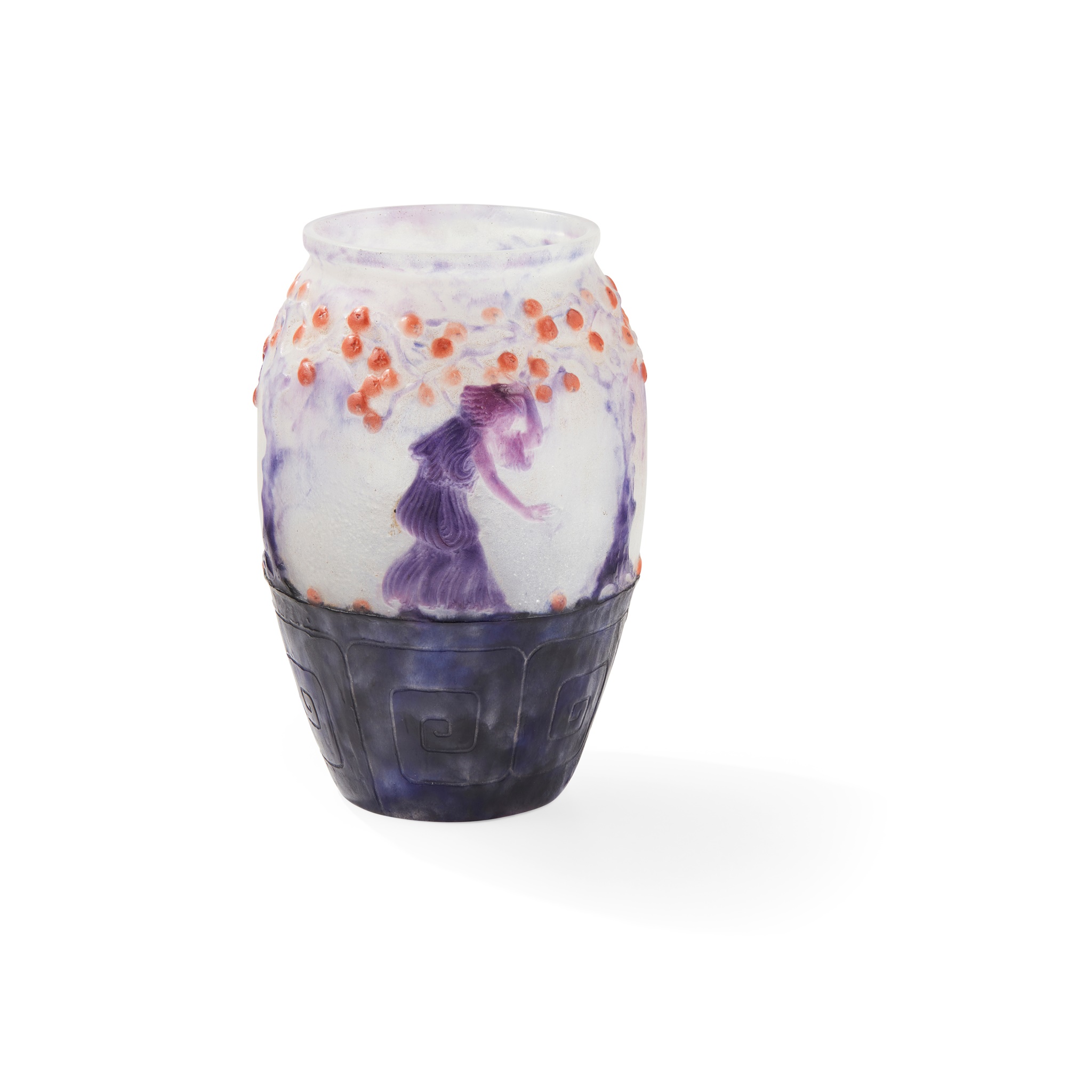GABRIEL ARGY-ROUSSEAU (1885-1953)
'LE JARDIN DES HESPERIDES' VASE, DESIGNED 1925
£17,500
Auction: Design Since 1860 | 21 October 2021 From 10:00
Description
pâte de verre, signed G. ARGY-ROUSSEAU/ FRANCE
Dimensions
24cm high
Footnote
Literature: J. Bloch-Dermant, G. Argy-Rousseau: Glassware as Art, London, 1991, fig. 26.01 (similar design illustrated).
Note: Gabriel Argy-Rousseau was a technical and artistic innovator whose chosen medium was pâte-de-verre and whose preferred form was hollow wares decorated in low relief. His work is characterised by simplicity and geometry, inspired by nature and ancient Greek design.
Argy-Rousseau became fascinated by pâte-de-verre and by 1920 had established his own company – Les Pâte-de-Verre d’Argy Rousseau. His working practise began with drawings from which he made plaster models which he painted with lacquer varnish and then covered in wax. He made sectional moulds secured with cords and the pâte-de-verre was his own formula composed of feldspar, kaolin and boric acid ground into a powder, with metallic oxides being added to provide the colour. The powder was combined with water and applied to the mould with a brush. When dry a coating of tragacanth was painted on to give a extra hardness and the interior was then filled with asbestos to help prevent it from collapsing while in the kiln. No mould could be reused and as a result of the production method each piece was unique, having distinctions in composition, paste and colouration.

